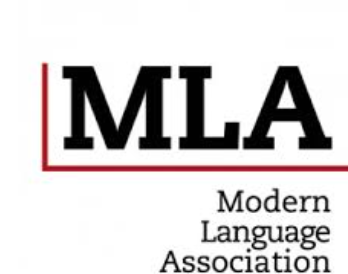How to Write a Cover Letter
- 22 March 2019
- 1250 words


MLA Citation rules are among the hardest ones to learn. The major problem with MLA citation is that students have to be very specific with the information cited. Students must identify where they took a specific sentence from as well as format it all in the correct manner. Hence, it all appears hard when one faces such problems at first, but reading through MLA guides like this will help you to become professional with all of this and format your papers correctly automatically.

As in any other paper formats, if you use the ideas of others, you should acknowledge your sources in the MLA format in text citation. If you summarize, paraphrase or directly quote someone’s ideas in the MLA format essay, you should always include in-text citations in parentheses.
Summary / paraphrase / directly quoting someone’s ideas = (the author + page/paragraph/line number).
Example:
At first, it is hard to deal with MLA citation rules, but it gets easier with time and experience (Turner par. 1).
It might be hard at first when a student faces problems with MLA citation rules but the guide on wr1ter.com can help one to become professional and correctly format all assignments without thinking of how he or she does it after all (Turner par. 1).
“Hence, it all appears hard when one faces such problems at first, but reading through MLA guides like this will help you to become professional with all of this and format your papers correctly automatically (Turner par. 1).
When it is impossible to identify the author of a specific work, it is still important to provide a full identification of the source. In such cases, one must acknowledge the short title of the article.
The rules for formatting of such titles is the same as for you to mention the title of another work inside the text. So, you must italicize the title if it is a lengthy work, such as a book, play, TV show, and so on. However, you should use quotation marks for shorter works like articles. The example would be:
If you did not know that Alex Turner is the author of this page, you would cite this page with the following in-text citation (“MLA Citation Rules” par. 1).
However, keep in mind that the title of the article should appear at the beginning of the citation line in the Works Cited page. For example:
“MLA Citation Rules.” Wr1ter.com, 2019, https://wr1ter.com/mla-citation. Accessed 20 March 2019. 2009.
For the in-text citation with 1-2 authors, MLA citation rules identify that all of the authors have to be mentioned in parenthesis. Therefore, all the last names of those authors have to appear as a list. For example:
If there were 2 authors of this article, you would acknowledge them like this (Turner and Turner par. 1).
For the sources of three and more authors, there are other rules on mentioning the authors. The length of the list of last names of the author would appear too long so that MLA citation rules suggest to use “et al.” text to indicate that there are more authors than the number appearing in parenthesis. As a result, the example of such citation will look like this:
Imagine that this sentence was taken from the source of three or more authors so that I would have to cite it according to the MLA citation rule that applies to such cases (Turner et al. par. 1).
There is a set of specific rules for MLA citations in specific cases that are not common.
There is a special rule for in-text citations in sentences that already mention the authors in the regular text. In such cases, only a page/paragraph/line number is put in parenthesis at the end of the sentence. For example:
Alex Turner claims that he knows MLA citation rules (par. 1).
For block quotation, you must begin them on a new line, double-space them, check if they are intended for 1″, and use them only if they are 4-lines long or more. You should never use quotation marks for block quotes. Also, the acknowledgment of the author goes after the last punctuation mark of the block quotes. For example:
MLA citation rules are among the hardest ones to learn. The major problem with MLA citation is that students have to be very specific with the information cited. Students must identify where they took a specific sentence from as well as format it all in the correct manner. Hence, it all appears hard when the one faces such problems at first, but reading through MLA guides like this will help you to become professional with all of this and format your papers correctly automatically. (par. 1)
For the corporate authors, the one can use the company’s name as the last name of the author in in-text citations.
Finally, in case of multiple citations present in one sentence, one should divide them with a semicolon. For example:
MLA citation rules are so easy to learn with a proper mentor (Turner par. 1; Turner et al. par. 1).